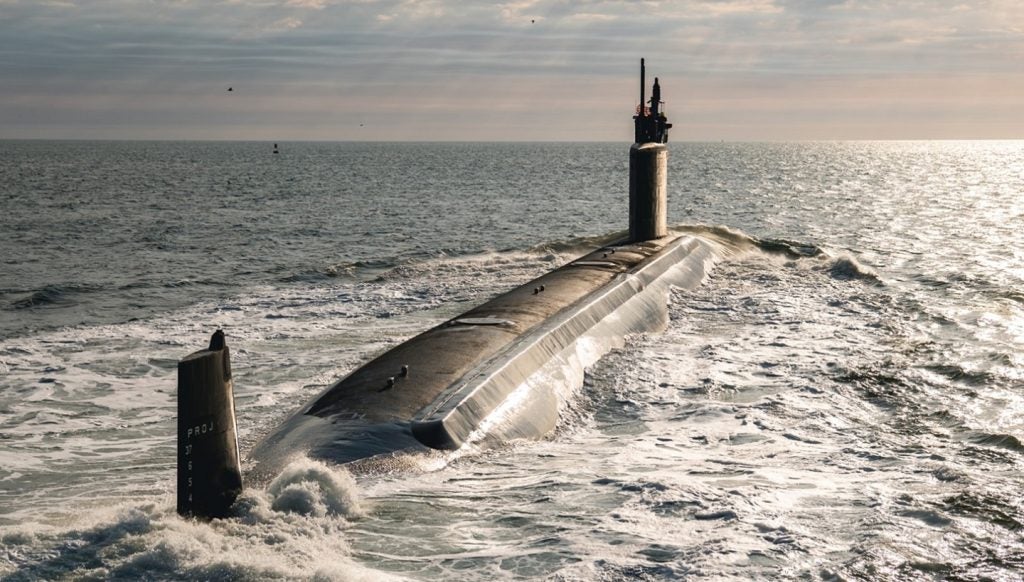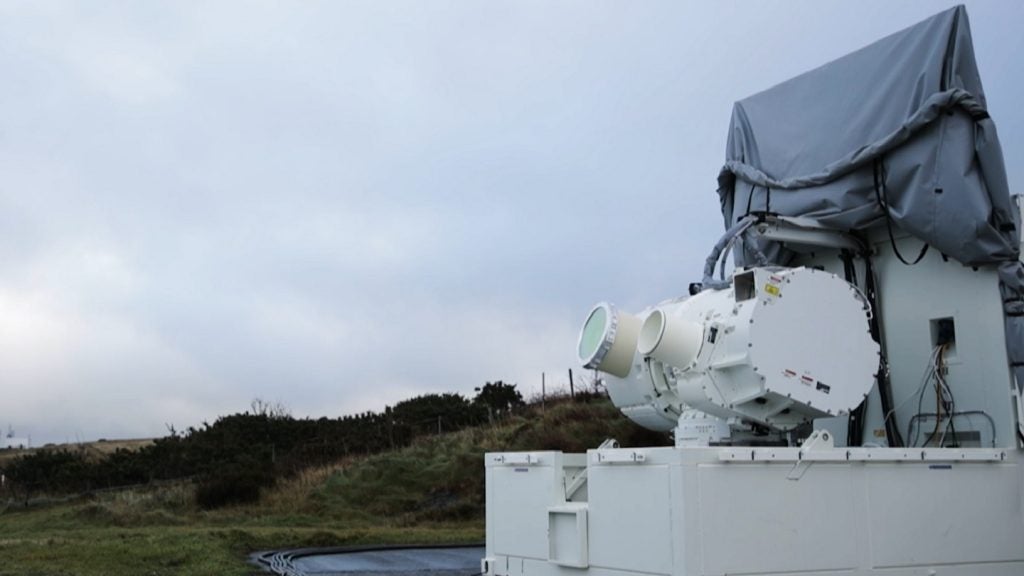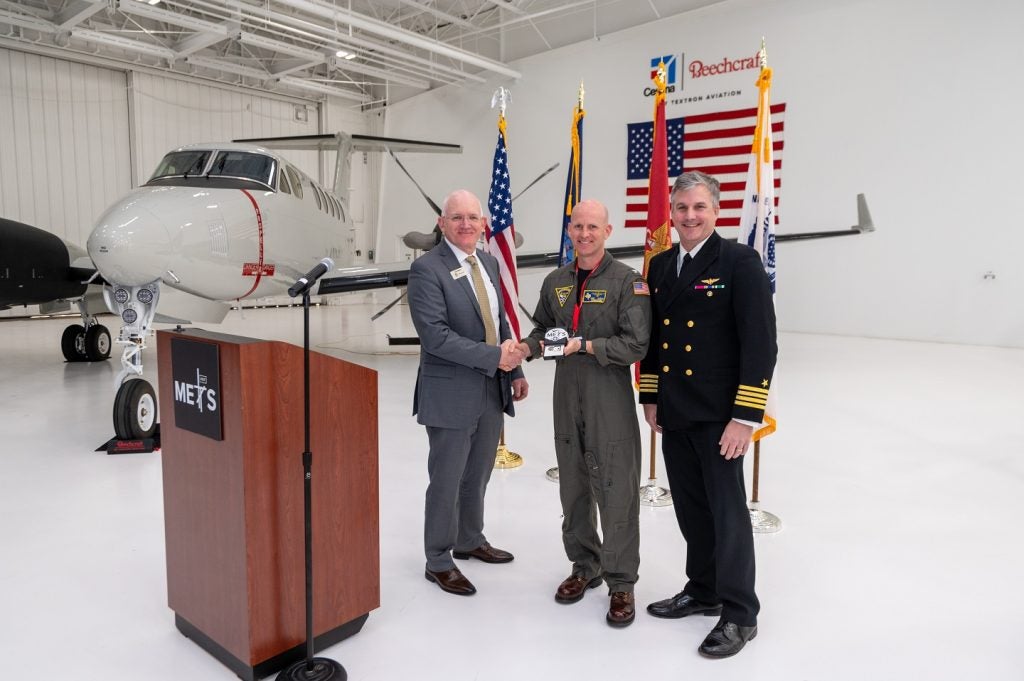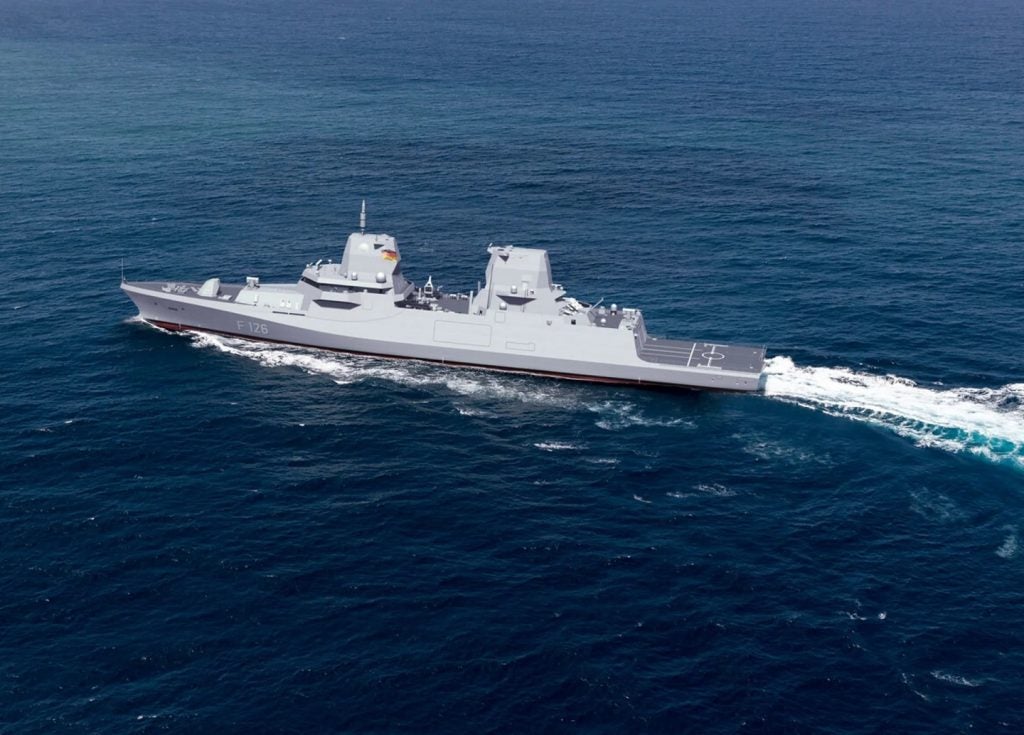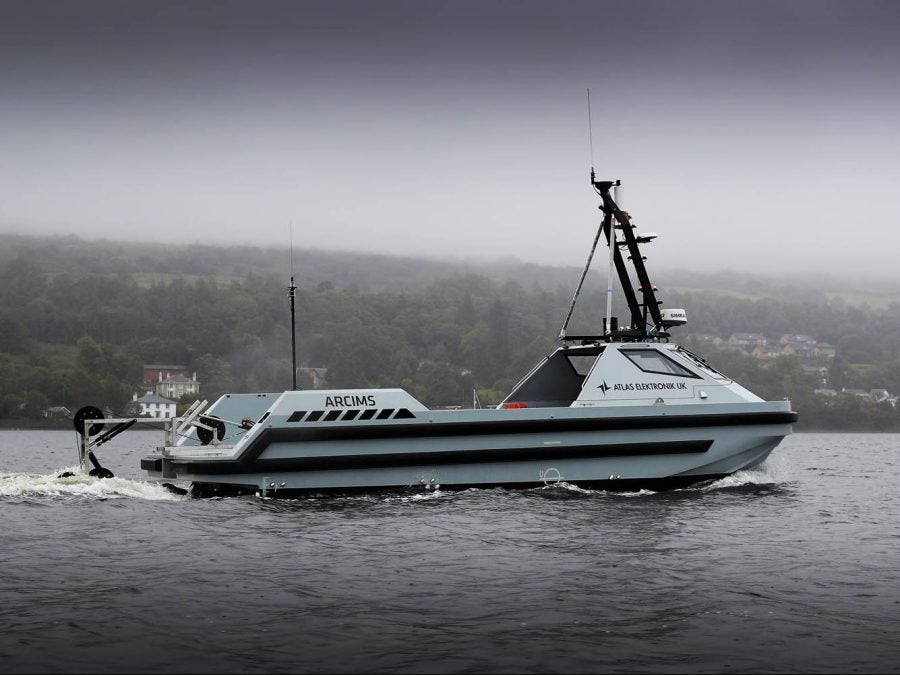
The UK Royal Navy will begin minehunting and survey operations using unmanned surface vessels (USVs) in March 2020.
The navy will deploy a mix of unmanned and remotely-operated USVs and submersibles designed to detect ‘smart mines’ and conduct survey missions of the ocean and seafloor from HMNB Clyde.
The active service follows a £13m contract award to Atlas Elektronik UK, the culmination of years of work and ongoing trials from the Royal Navy, Defence Equipment and Support (DE&S) and Defence Science Technology Laboratory (Dstl).
Initial operation of the vessel will be carried out under the Royal Navy’s Project Wilton which aims to develop and deliver the navy’s unmanned minehunting and survey programmes. Wilton has three vessels under its control; two remote-controlled and one manned boat alongside several submersible vehicles.
Maritime capability assistant chief of staff Commodore Mike Knott said: “With equipment and personnel now operating on the Clyde, the transition to widespread use of autonomous systems in mine countermeasures (MCM) is becoming a reality and places the Royal Navy MCM community at the cutting edge.”
The unmanned systems are set to supplement and support the Royal Navy’s existing manned minehunting force provided by Hunt- and Sandown-class minehunter vessels.
How well do you really know your competitors?
Access the most comprehensive Company Profiles on the market, powered by GlobalData. Save hours of research. Gain competitive edge.

Thank you!
Your download email will arrive shortly
Not ready to buy yet? Download a free sample
We are confident about the unique quality of our Company Profiles. However, we want you to make the most beneficial decision for your business, so we offer a free sample that you can download by submitting the below form
By GlobalDataKnott added: “This exciting project handover is a real step forward in realising our ambition to make minehunting safer and more effective through the use of autonomous and robotic technology.”
Capabilities include Atlas Elektronik’s ARCIMS vehicle designed for minesweeping, minehunting, mine disposal, anti-submarine warfare, surveillance, force protection and diver support using several different mission module options. ARCIMS first gained notice as part of Exercise Unmanned Warrior in 2016, where 50 participants demonstrated the capabilities of unmanned systems to the Royal Navy.
Wilton is seen by the Royal Navy as a stepping stone between current and future mine countermeasures (MCM) technology, with the ultimate goal of delivering and developing a fully autonomous MCM system for the UK which would be able to be deployed from many vessels including the existing surface fleet.
The systems are designed to be transportable via low-loaders, meaning they can be quickly deployed into theatre wherever they are needed.
For the time being the vessels will be based in the UK where they will survey and patrol British waters while providing data on their use that the Royal Navy can learn from for future deployments. At the moment the vessels will be used for route survey with mine disposal capabilities being further developed.
Project Wilton is named after the HMS Wilton, an experimental coastal minesweeper launched in 1972 that was the first warship in the world to use a glass-reinforced plastic hull and laid the groundwork for the Hunt-class MCM vessels. At the time, HMS Wilton was seen to fulfil a similar role in stepping up MCM capabilities as Project Wilton is today.
Autonomy in naval forces is being largely developed with to take on the 3Ds’ of dull, dirty and dangerous missions, in order to keep sailors out of harm’s way.



